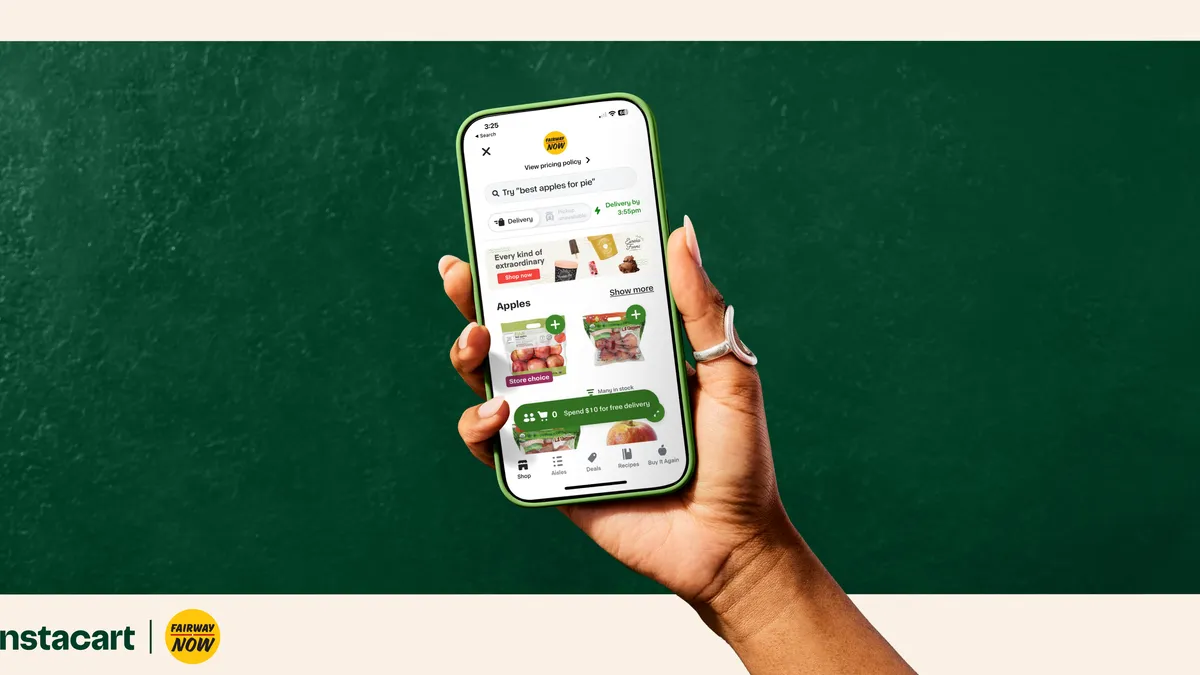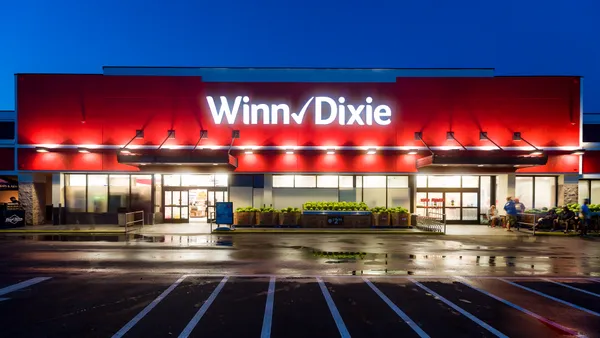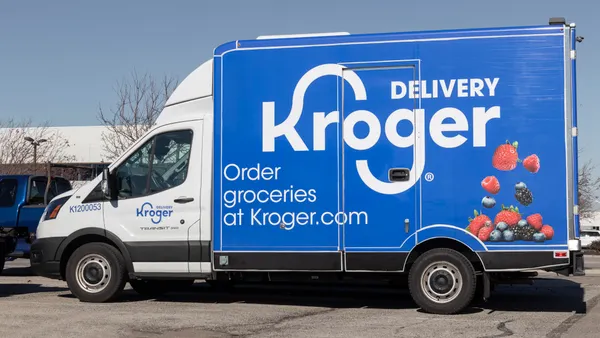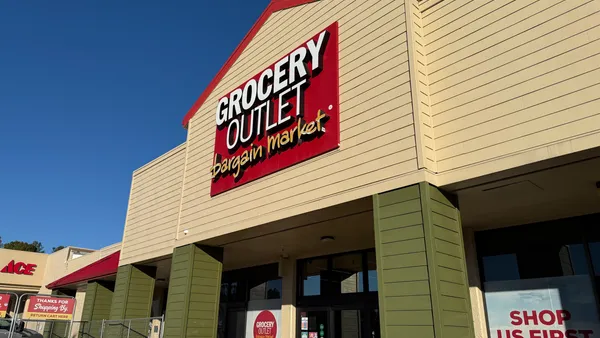Dive Brief:
- Instacart beat Wall Street estimates with its first-quarter results last week, recording a 14% year-over-year increase in orders and its fifth consecutive quarter of double-digit gross transactions value growth.
- During Q1, which ended March 31, the company saw strength in order frequency, user growth and adoption of its Instacart+ membership.
- While Instacart has not seen “any unexpected changes in consumer behaviors” so far this year, advertisers are expressing worry over economic uncertainty and trade policies, which could impact their ad spending, CEO Fidji Simo told investors.
Dive Insight:
Simo said Instacart’s Q1 results showcase how the company is remaining relevant to consumers as they continue to seek convenient solutions for grocery shopping, Simo told investors.
“When we look at the macro [environment] and how resilient we can be … I think groceries are an essential spend. It’s not a discretionary thing,” Simo told investors. “And grocery delivery is fundamentally all about convenience, and we don’t think convenience is going away.”
During Q1, Instacart recorded its highest number of orders, gross transaction value and total revenue since the company went public in 2023.
Instacart’s financial performance has improved since its IPO
With grocery still underpenetrated online, Instacart is focusing on ease of use and affordability to drive online adoption, Simo said, pointing to Instacart’s launch of no-fee delivery for Instacart+ members on baskets of at least $10.
Instacart’s advertising and other revenue in Q1 was down almost 7.5% compared to the prior quarter, to $247 million.
“While we continue to see strength in our advertising trends to date, we unsurprisingly have started to hear concerns from brands about how uncertainty around trade policies and other regulations could impact their ability to spend on marketing,” Simo said.
Instacart is continuing to make progress on diversifying its base of advertiser partners, Simo said. During Q2, Instacart expects advertising and other revenue growth to modestly outpace its anticipated GTV growth.
Going forward, Instacart is banking on its retailer partnerships and deep retail media capabilities to keep a competitive edge, Simo said. The recent acquisition of Wynshop, for example, will help the company expand the number of online storefronts it powers, deepen retailer relationships and provide its partners with more solutions, Simo said.
For Q2, Instacart is expecting GTV to fall between $8.85 billion and $9 billion, representing year-over-year growth between 8% and 10%. The company also expects order growth to outpace GTV growth.











